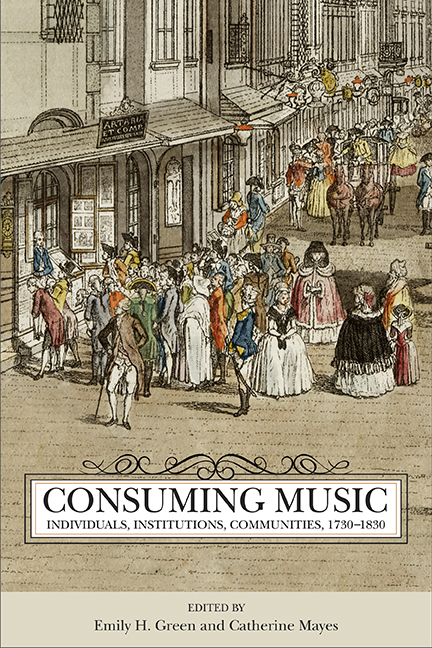Book contents
- Frontmatter
- Contents
- Acknowledgments
- Introduction
- Part One Selling Variety
- Part Two Edifying Readers
- Part Three Marketing the Mundane
- 5 Musical Style as Commercial Strategy in Romantic Chamber Music
- 6 In Vienna “Only Waltzes Get Printed”: The Decline and Transformation of the Contredanse Hongroise in the Early Nineteenth Century
- 7 The Power to Please: Gender and Celebrity Self-Commodification in the Early American Republic
- Part Four Cultivating Communities
- List of Contributors
- Index
6 - In Vienna “Only Waltzes Get Printed”: The Decline and Transformation of the Contredanse Hongroise in the Early Nineteenth Century
from Part Three - Marketing the Mundane
Published online by Cambridge University Press: 26 April 2018
- Frontmatter
- Contents
- Acknowledgments
- Introduction
- Part One Selling Variety
- Part Two Edifying Readers
- Part Three Marketing the Mundane
- 5 Musical Style as Commercial Strategy in Romantic Chamber Music
- 6 In Vienna “Only Waltzes Get Printed”: The Decline and Transformation of the Contredanse Hongroise in the Early Nineteenth Century
- 7 The Power to Please: Gender and Celebrity Self-Commodification in the Early American Republic
- Part Four Cultivating Communities
- List of Contributors
- Index
Summary
In Vienna at the turn of the nineteenth century, the enjoyment of music and dances of various national origins was both common and unsurprising, as subjects from lands throughout the Habsburg Empire flocked to the city to make their living. In Viennese author Joseph Ferdinand Kringsteiner's 1807 farce Der Tanzmeister, a chorus of guests at a private ball provides humorous confirmation of the multitude of dances that could be included in such an event. I reproduce the text of the chorus here, both in its original dialect and in an approximate English translation.
Der Anfang, so ists Etikett,
der geschieht mit einem Menuett.
Dann wirbeln gleich die Pauken drein
Und's fallen halt die Deutschen ein;
Dann gehts erst, so ist's der Brauch,
Uiber d'Landlerischen auch
Ist das vorbey, so weiß man eh,
Da kömmt sodann das englische,
Dann wechseln wir mit türkischen,
Bald wieder mit Kosakischen;
Damit man endlich alls probirt,
Wird Ungarisch auch produzirt;
Und habn wir g'nug tanzt, dann erst
gehn wir nach Haus,
Doch vorher, versteht sich, kömmt noch
der Kehraus.
[The opening, according to etiquette,
takes place with a minuet.
Then the kettledrums roll in
And the German dances just break right out;
Then next come, according to custom,
The Ländlers too[;]
When those are over, as one knows,
Then come the English dances,
Then we switch to the Turkish dance, Soon again to the Cossack dance;
Finally[,] so that one tries everything,
The Hungarian dance is also cranked out;
And once we've danced enough, only then
do we go home,
But before that, of course, comes
the Kehraus.]
Most of the dances mentioned in this chorus—the minuet; the German dance and Ländler, whose names were often used interchangeably; the English dance, or longways contredanse; the Cossack dance; and the Kehraus, or last dance of the ball—were common at the turn of the nineteenth century, and references to and descriptions of them appear in numerous contemporary sources. The allusion to a Turkish dance, however, is more unusual; Turkish dances were sometimes imitated in stage works, but Turkish music and the militaristic alla turca style that evoked it for Western European consumers were not typically associated with social dancing
- Type
- Chapter
- Information
- Consuming MusicIndividuals, Institutions, Communities, 1730–1830, pp. 154 - 175Publisher: Boydell & BrewerPrint publication year: 2017



